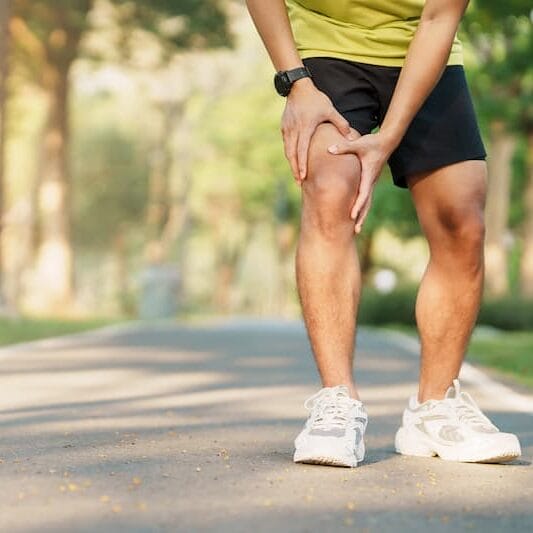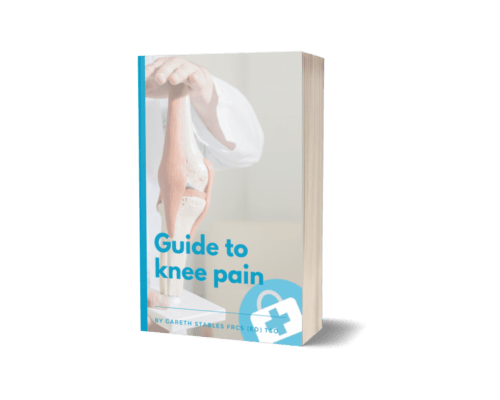Hit the Ground Running: Tips for Runners Struggling with Knee Pain
Knee pain can be a major obstacle for runners, but it doesn't have to stop you in your tracks. Whether you're a seasoned marathoner or just getting started with your running journey, there are strategies you can use to manage knee pain and keep moving forward. In this blog post, I'll explore some of the most common causes of knee pain in runners, along with practical tips and exercises to help you stay pain-free and hit the ground running. So let's lace up our shoes, hit the road, and learn how to manage knee pain like a pro.
Causes of Knee Pain in Runners
Knee pain is a common issue for runners, and there are several potential causes. Overuse injuries, such as runner's knee and patellar tendinitis, can result from excessive or intense training without proper rest and recovery. Poor biomechanics, including improper footwear or running form, can also contribute to knee pain. Muscle imbalances, where certain muscles are weaker or tighter than others, can also lead to knee pain. Finally, previous injuries to the knee, such as a ligament tear or meniscus injury, can make runners more susceptible to knee pain in the future. By understanding the potential causes of knee pain, runners can take steps to prevent and manage this common issue.

Prevention Strategies for Knee Pain
Prevention is key when it comes to managing knee pain as a runner. Here are some strategies that can help you prevent knee pain from occurring in the first place:
- Build up your mileage gradually: Increasing your mileage too quickly can put undue stress on your knees and lead to overuse injuries. Aim to increase your mileage by no more than 10% each week.
- Invest in proper footwear: Shoes with good cushioning and support can help absorb shock and reduce the impact on your knees.
- Work on your running form: Strive for a midfoot or forefoot strike, rather than heel striking, to reduce the impact on your knees. Additionally, keep your posture upright and avoid overstriding.
- Cross-train and strengthen supporting muscles: Incorporate cross-training activities such as swimming, cycling, or yoga to give your knees a break from running. Additionally, strengthening exercises for your hips, glutes, and core can help improve your running form and reduce stress on your knees.
- Warm up and cool down properly: Take the time to warm up before your runs with dynamic stretching and gradually increasing your pace. After your run, cool down with static stretching to help improve flexibility and reduce muscle soreness.
By incorporating these strategies into your running routine, you can reduce your risk of developing knee pain and stay healthy and injury-free.
Managing Your Knee Pain During a Run
Knee pain is a common issue for runners, but there are ways to manage it while still enjoying your run.
Proper running form is important for preventing knee pain, as it reduces the impact on your knees. Maintaining good posture, engaging your core, and landing on the middle of your foot instead of your heel can all help prevent knee pain. Additionally, taking breaks during your run can give your knees time to rest and recover. Knee braces or compression sleeves can provide additional support and stability, reducing knee pain during a run.
If you do get knee pain, simple over-the-counter pain killers can help you to manage it. Nonsteroidal anti-inflammatory drugs (NSAIDs) like ibuprofen can help reduce inflammation and pain. Other treatments that can help with knee pain include rest, ice or heat therapy, and stretching. It's important to consult a healthcare professional if knee pain is persistent or severe, as they can provide a proper diagnosis and recommend further treatment options.
By following proper running form, taking breaks when needed, using braces or compression sleeves, and utilizing over-the-counter pain relievers or other treatments, runners can manage knee pain and continue to enjoy the activity. However, it's important to listen to your body and take a break from running if knee pain persists or worsens.
Exercises to Help Your Knee Pain
Exercises can be an effective way to ease your knee pain, as they can help strengthen the muscles surrounding your knee joint and improve flexibility. Stretching exercises can help to loosen up tight muscles, reducing tension and pressure on the knee joint. Examples of stretches that can be beneficial for knee pain relief include quad stretches, hamstring stretches, and calf stretches.
Strength training exercises can also be useful for improving your knee pain, as they help to build up the muscles surrounding your knee joint. Strengthening exercises like lunges, squats, and leg presses can all be helpful for improving knee pain. However, it's important to start with low weights and progress slowly, as overloading your knee joint can worsen your pain.
Foam rolling is another technique that can be used to alleviate knee pain. Foam rolling helps to massage the muscles and connective tissues around the knee joint, increasing blood flow and reducing stiffness. Physical therapy can also be an effective way to manage your knee pain, as a trained therapist can help you develop a customized exercise plan and provide guidance on proper technique.
It's important to note that not all exercises are suitable for everyone with knee pain, and it's important to consult with a healthcare professional before starting a new exercise routine. Additionally, it's important to start slowly and gradually build up intensity to avoid worsening your pain. By incorporating a variety of exercises into your routine, you can help ease your knee pain and maintain an active lifestyle.
Lifestyle Changes for Runners with Knee Pain
Runners with knee pain can make lifestyle changes to reduce pain and avoid further injury. Cross-training can be an effective way to stay active while reducing the impact on your knees. Swimming, cycling, and yoga are all low-impact activities that can help maintain cardiovascular fitness and muscle strength, without putting undue stress on your knee joint. It's important to choose activities that you enjoy and are sustainable, so that you can maintain a regular exercise routine.
Proper nutrition is also important for managing knee pain. A diet rich in anti-inflammatory foods, such as fruits, vegetables, and whole grains, can help reduce inflammation and promote healing. Omega-3 fatty acids, found in fatty fish like salmon, can also help reduce inflammation. It's important to stay hydrated by drinking plenty of water, which helps to lubricate the joints and prevent stiffness.
Maintaining a healthy weight is also essential for reducing your knee pain. Excess weight puts added stress on the knee joint, increasing the risk of injury and exacerbating pain. By making healthy lifestyle choices, such as exercising regularly and eating a balanced diet, runners with knee pain can reduce pain and avoid further injury.

Conclusion
In conclusion, knee pain can be a frustrating and challenging issue for runners, but it doesn't have to mean the end of your running career. By understanding the common causes of knee pain and taking steps to prevent and manage it, runners can continue to pursue their passion while minimizing the risk of injury.
The key points covered in this blog post include the importance of proper form, prevention strategies, pain management techniques, exercises for knee pain relief, and lifestyle changes to reduce pain and avoid injury.
Remember, seeking the help of a medical professional or physical therapist can also be invaluable for managing knee pain and staying healthy.
So don't let knee pain hold you back, with the right approach, you can hit the ground running and enjoy the many benefits of this rewarding activity.


